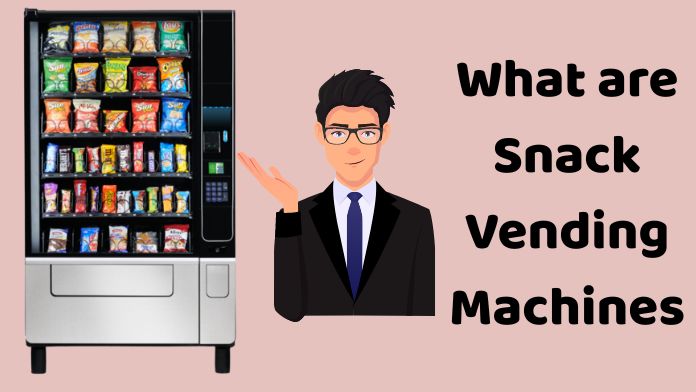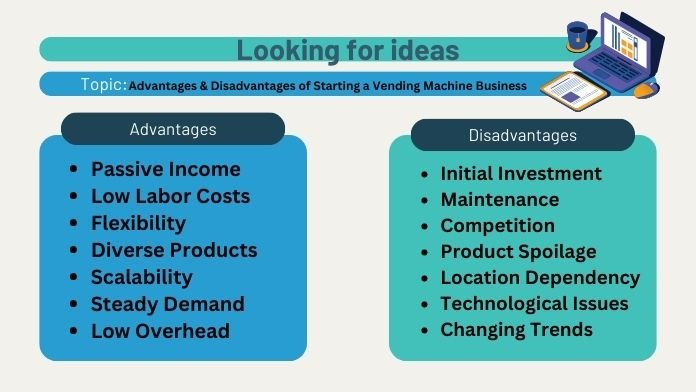Snack vending machines, ubiquitous in modern society, offer a fascinating blend of technology an\d convenience. These automated devices have transformed how we access snacks, employing a combination of user inputs, digital transactions, and mechanical processes to deliver a wide array of treats.
Understanding the intricate workings behind these machines provides insights into the intersection of innovation and consumer experience. Typically, vending machines include endless rows of goods, each secured by coils.
Once your coins have been accepted or your card transaction has been authorized, electric motors that regulate these coils are turned on. Pickers are sometimes used to retrieve products from vending machines.
What are Snack Vending Machines

Snack vending machines are automated devices that offer a range of pre-packaged snacks and treats. Found in various locations, they allow users to select products through an interface, make electronics payments, and receive chosen items promptly.
These machines combine the latest electronics technology and convenience, catering to on-the-go cravings and providing a glimpse into modern retail innovation.
See How to Get your Business Started Quickly
Start taking credit cards—options on using the Point of Sale System. Vending equipment isn’t any innovative new product idea—they’re practically everywhere. However, for people that want a start-up business, there are many reasons to love vending products.
Consider that vending machines generate more than $34 billion annually in revenues in the US alone. So, why do you think about starting your own vending machine company?
Consider Your Possible Products
Food vendors have been used widely for years, as simple as they are, but other vendors can sell specialized products. Various themes are available on their websites when you start selling food vendors.
Healthy snacks in classrooms are an effective way to get people healthy because they’ve been looking for nutritious food in school. Ideally, it is possible to customize the products for the markets you want to enter.
How to Start a Vending Machine Business in 6 Steps

Starting a vending machine business involves several key steps. Here’s a streamlined guide in six steps:
- Research and Planning: Conduct thorough market research to identify target locations, demographics, and popular products. Analyze competition and consumer preferences. Create a solid business plan outlining your budget, goals, pricing strategy, and potential profit margins.
- Choose Products and Machines: Select the types of vending machines and products you want to offer. Consider factors like demand, location, and trends. Common options include snacks, beverages, coffee, or specialized items like health foods.
- Secure Locations: Location is crucial for success. Identify high-traffic areas with your target audience, such as schools, office complexes, hospitals, or gyms. Negotiate leases or contracts with property owners, ensuring proper permits and permissions are in place.
- Financing and Acquiring Machines: Determine your budget for machines, products, and initial expenses. You can buy new or used machines or lease them. Explore financing options and compare deals to find the best fit for your budget.
- Stocking and Maintenance: Purchase initial inventory and stock the machines based on consumer preferences. Regularly monitor inventory levels and rotate products to prevent staleness. Set a maintenance schedule to ensure clean, functional, and well-maintained machines.
- Marketing and Management: Develop a marketing strategy to attract customers to your vending machines. Utilize social media, signage, and promotions to create awareness. Monitor sales data to analyze trends and adjust your product offerings accordingly. Maintain excellent customer service and promptly address any issues.
Remember that success in the vending machine business requires dedication, continuous monitoring, and adaptation to changing consumer preferences. Starting small and gradually expanding can help you manage risks and build a profitable venture over time.
How to Start a Vending Machine Business: A Step-by-Step Guides

This step-by-step guide will walk you through launching your own vending machine business.
Research and Planning Begin by conducting thorough research. Identify your target market & the types of products that are in demand. Consider the demographics of the locations you plan to target. Create a comprehensive business owner plan that outlines your strategies, goals, budget, and projected profits.
Choose Your Products and Machines Select the types of vending machines and products that align with your research. Decide whether you want to offer snacks, beverages, healthy snack options, or a combination—research suppliers for the products you want to stock in your drink machines.
Secure Profitable Locations The success of your vending machine business owner heavily depends on the locations you choose. Look for high-traffic areas such as office complexes, schools, hospitals, and gyms. Approach property owners or managers to secure permission to place your machines.
Obtain Financing and Acquire Machines Determine your budget for soda machines, initial inventory, and operational costs. Consider financing options such as personal savings, business loans, or investors.
Stocking and Maintenance Source products from wholesalers or suppliers and stock your machines with various items. Ensure your inventory remains fresh food and up-to-date.
Marketing and Customer Engagement Develop a marketing strategy to attract customers to your vending machines. Utilize social media, flyers, and signage to create awareness about your business.
Data Analysis and Adaptation Install tracking software to monitor sales data and customer preferences. Analyze this data to make informed decisions about restocking, adjusting pricing, and refining your product offerings.
Customer Service and Expansion Prioritize excellent customer service by promptly addressing issues or concerns. As your business grows, consider expanding to new locations or diversifying your product range to cater to different preferences.
Choose the Right Type of Machine for Your Business
The machines can have three kinds: mechanical and electrically operated. The Bulk machine carries one product in bulk and distributes one dollar a quarter. It is usually found in bathroom dispensers supplying a variety of toiletries and cleaning services. The first two are $50 – $100. Machines are mechanically based on traditional vending machines, in breaks.
They offer a variety of products which cost around $2000 initially. However, it produces more profit per unit than a bulk machine. The most sophisticated model is a computer vending machine. The machines usually have touch-screen screens and are easy to use and accept payments from credit and debit cards.
Find the Right Location for your Vending Machines
The kind of vendors you select will determine the profitability of your vending machines. The machine might also fail in a strip mall with restaurants on the strip, whereas this machine may flourish in office parks. Think about places in which a person purchased something from a vending machine.
Consider your Vending Machine Options
Most people might think that most vending machines have only an average variety of snack and drinks – you already know that vending machines have more opportunities than most people realize. There are four distinct types of machine vending (outlined below). Choose the machine of the four different kinds that will be the greatest-selling product in the target market.
Whatever vending machine you decide on, start with a small or large machine with a targeted market. You learn progressively the most widely adopted patterns in stock and on the site and add additional equipment according to these patterns. Get smart financial advice right in your inbox!
Do Vending Machine Owners Pay Rent
Yes, the operator pays the landlord a rental fee for the building’s equipment. Most vending machines sell between 5% and 20%.
Find the Right Market
Your vending equipment will have the best locations for customers. Some vending machines have microwavable foods or similar offerings that can be served as meals.
A snack machine vendor can serve as an office. But vending machines that offer novelty gifts or small sweets could do well in small businesses. Lastly, placing vending machines that provide medical or electrical items are perfect for a location at airports, highway stations, or railway stations.
Explore your Financing Options
Starting a use a vending machine company requires fewer investments than a typical start-up — most businesses require thousands. But several thousand dollars is not pocket change.
The short-term lending option enables a business person to get a cash-back loan for their vending equipment by providing them with cash to buy it or pay back their rent.
Advantages & Disadvantages of Starting a Vending Machine Business

Starting a vending machine business comes with its share of advantages and disadvantages.
Advantages:
- Passive Income: Vending machines operate 24/7, allowing you to earn income without constant supervision.
- Low Labor Costs: Minimal staffing is required, reducing labor expenses.
- Flexibility: You can choose locations and adjust product offerings based on demand and trends.
- Diverse Products: toy vending machines can dispense various products, from snack to beverages to hygiene items.
- Scalability: As profits increase, you can expand your vending machine offerings fleet across multiple locations.
- Steady Demand: People seek convenience, making a few vending machines a reliable source of income.
- Low Overhead: Operating costs are generally lower than traditional retail businesses.
Disadvantages:
- Initial Investment: Setting up machines and purchasing inventory requires substantial upfront capital.
- Maintenance: Machines can break down or malfunction, necessitating regular maintenance and repair costs.
- Competition: High-demand areas might have significant competition from other vending operators.
- Product Spoilage: Perishable items risk expiring before purchasing, leading to losses.
- Location Dependency: Success relies heavily on securing optimal high-traffic locations.
- Technological Issues: Cashless payment systems and digital displays can encounter technical problems.
- Changing Trends: Consumer preferences and health trends may impact product demand and choices.
Ultimately, success in the vending machine business hinges on strategic Planning, proper location selection, effective maintenance, and adapting to changing market dynamics. Careful consideration of these pros & cons is crucial for making an informed decision about venturing into this business.
FAQ
Are Vending Machines Profitable?
Yes. Valet vending machines will provide a revenue boost. A typical vending machine earns $25 a day, but vending machines well maintained in safe, high-volume places can generate over $500 a month. Can someone list their needs? Fundera from nerd wallet.
Are Snack Vending Machines Profitable?
Vending equipment is extremely profitable. You can easily make decent profits with very little money.
How Much Does the Average Snack Vending Machine Make?
Typical vending machines generate more weekly money for over $300 a month. Usually, vendors produce much less, and others produce much greater amounts. The better-placed machines and equipment the owners have, the better the earnings.
How do you Get Snacks Out of a Vending Machine?
The computer scans your receipt and uses your input to select the right beverage or snack. The product is pulled by a mechanical device and transported to resemble a vending machine.
How Does a Vending Machine Work Step by Step?
It scans a receipt, coin slot or card and uses its input to pick the right drinks or snack. The device grabs the product and places them in the slot or spiral arms to release and drop the snack.
Conclusion
Snack vending machines represent a harmonious blend of technology and consumer demand, streamlining how we access snacks. Customers can select their desired snack items through a user-friendly interface, triggering a complex chain of events. Behind the scenes, these machines incorporate sophisticated inventory tracking systems to ensure availability.
Upon selection, the machine communicates with a central processor to verify the payment, employing secure digital transactions that guarantee convenience and safety. Subsequently, mechanical actions involving conveyors, motors, and sensors are set in motion. These mechanisms work in tandem to locate and retrieve the chosen snack from its designated slot, maintaining product integrity throughout the process.

